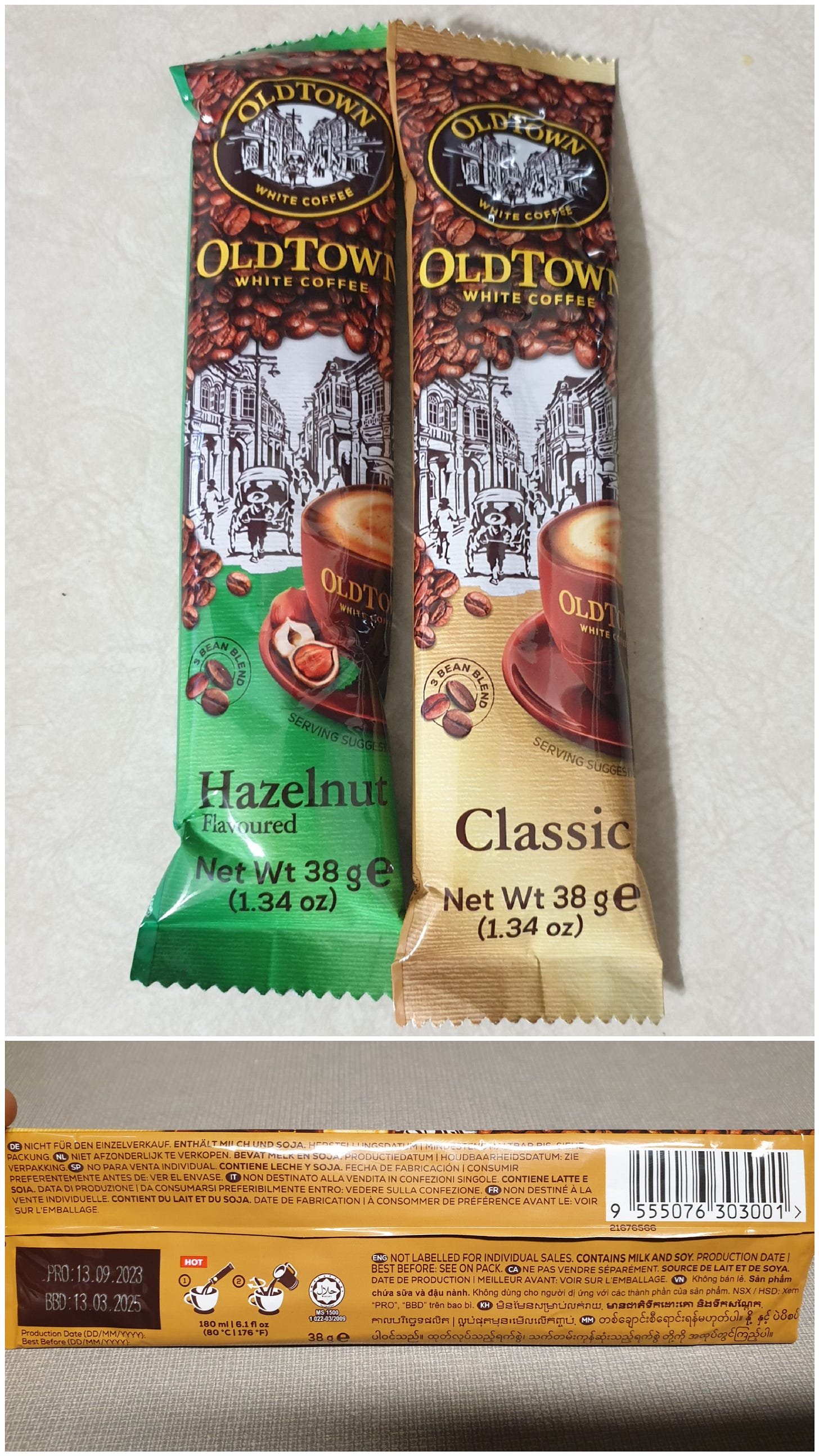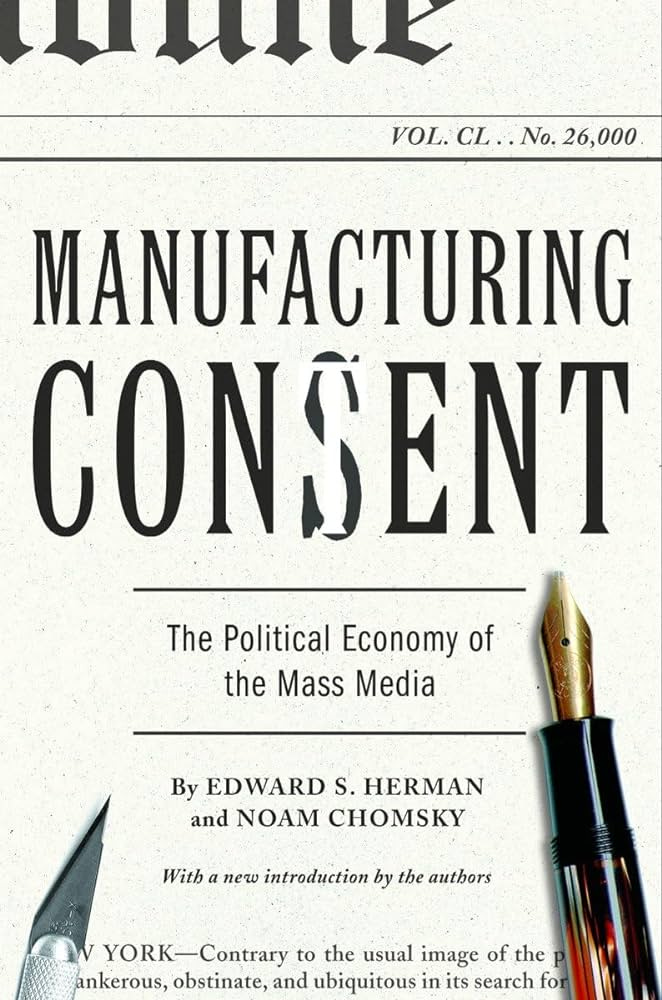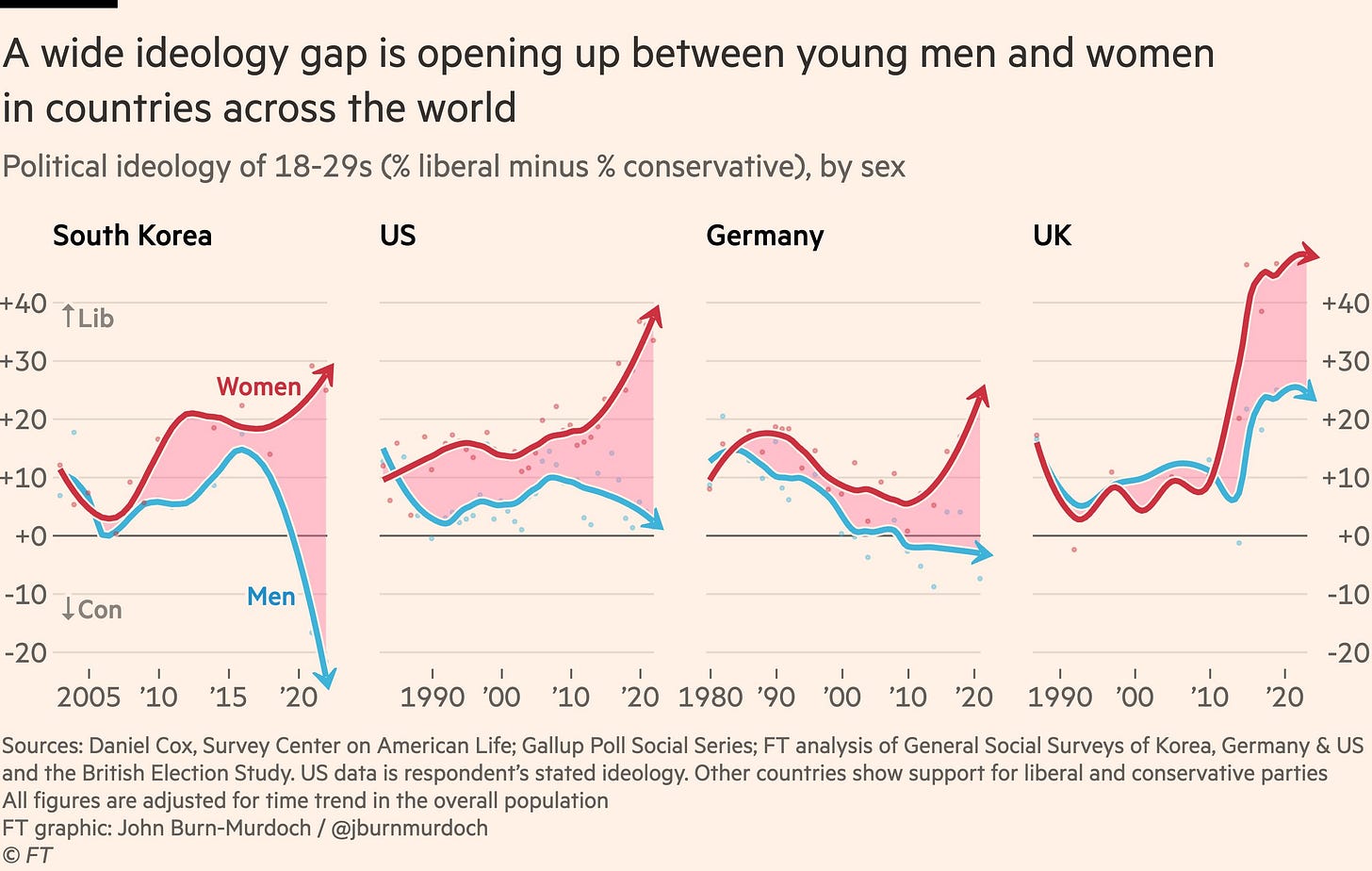The 195th Block: Zika, Ebola, and Covid-19 could never!
I apologise for the largely pessimistic tone of the newsletter this week
This week…
Your reading time is about 7 minutes. Let’s start.
First, a follow-up from last week’s edition, on speech and accents. BBC’s Sophia Smith Galer, wrote about the influencer voice, a specific accent that evolved from the vlogger era and is now noticeable on TikTok as well. Plus, Pamela Rontziokos profiled Mahmoud Ismail for The Guardian about his Lebanese-Australian ethnolect.
I also have something for French speakers: While making myself a cup of instant white coffee, I was reading the packaging and noticed two French versions marked FR and CA. They say the same thing but in different ways. I don’t know if it’s a requirement for the Canadian market, but surely Canadian francophones can understand the French label? (You might need to zoom in or hover for the alt text to read the packaging.)

Next, let’s look at romanticising diseases, which Nicole Karlis called a “luxury” for high-income countries in her Salon piece about how The Brady Bunch facilitates misplaced nostalgia for measles on social media. In it, she interviewed Natasha Crowcroft, co-chair of the Measles and Rubella Partnership and senior technical advisor for measles and rubella at the World Health Organisation (WHO):
Crowcroft said if a child is healthy and in good shape, and has access to quality healthcare in a high-income country, that person has about a 1 in 1,000 chance of dying from measles. There’s also a one in five chance that the child will end up in the hospital.
“If I said one and a 1000 people who eat this yogurt would get a severe allergy, that product would be off the market,” Crowcroft said. “If you put it in any other context, people don’t accept these risks.”
The WHO recently reported that Europe saw a 30-fold increase in measles last year. Of course, partly to blame is the pandemic, which significantly impacted immunisation system performance—certainly not just for measles, and not just in Europe. However, these countries are at risk of outbreaks now that international travel increases and social-distancing measures are gone, and many health care systems are one outbreak away from a collapse.
Pardon the cynicism. It is largely due to a TikTok I saw that spoke lightly of the high rates of chlamydia in Norway. Here is where I invite you to reexamine Karlis’ claim again: Imagine if this was a South American, African, or Asian country. Do you think the comment section would be so filled with he-he-he, ha-ha-ha, and jokey jokes? Zika, Ebola, and Covid-19 could never!
And now, a selection of top stories on my radar, a few personal recommendations, and the chart of the week.
ICYMI: The Previous Block connected speech, language, and communication with the information disorder. CORRECTION NOTICE: None notified. The data collection app at the heart of the BJP’s Indian election campaign
Srishti Jaswal for Rest of World:
All political parties collect as much data and information as they can in order to shape their strategies, according to Sanjay Kumar, a professor and co-director of the Lokniti research program at the Centre for the Study of Developing Societies, who has been studying Indian elections for three decades. The party with more information will be better positioned to mobilize voters.
But some data and electoral experts Rest of World spoke to raised concerns about the scale and detail of this data collection exercise, and said it could give the BJP an electoral advantage by allowing them to target voters at a granular level.
“It is concerning, mostly because a booth is a very small entity — it’s only 800, 700 people at a booth,” said Shivam Shankar Singh, a data analyst, former BJP consultant, and author of the book How to Win an Indian Election: What Political Parties Don’t Want You to Know. At that scale, it is easy for a political party to know who supports them and who does not, he said.
Others raised privacy concerns and said that data of this kind could be used to target voters based on certain characteristics, such as by shaping campaign messaging, and organizing events aimed at specific communities. “The major concern is micro-targeting based on caste and religion,” Srinivas Kodali, an independent privacy researcher, told Rest of World. “The more any political party knows about the voter, the more powerful they get.”
Well, the users “voluntarily” signed up, didn’t they? They read the T&C, didn’t they?
Ugandan internet propaganda network exposed by the BBC
Marco Silva for BBC:
It is not every day that you get to take a selfie with the long-serving President of Uganda, Yoweri Museveni. When the opportunity arose, Dr Jamechia Hoyle went for it.
She is a senior consultant in the United States, focused on global health security. Back in October 2017, she had travelled to the Ugandan capital, Kampala, to attend an international conference.
Mr Museveni was there to welcome his foreign guests.
Making her way through the crowds, Dr Hoyle approached him, smartphone in hand. “He was really happy to engage with us and take the picture,” she recalls.
Seeing a broad-smiling Dr Hoyle and the president, surrounded by smiling faces trying to get in the shot, photographers couldn’t resist—and they too captured that image.
You know how it goes: That photo would later be used by fake social media accounts to spread state propaganda.
Is Ukraine’s information war turning on its own journalists?
Jon Allsop for CJR:
Last month, France 24 published a short film on the work of journalists who have reported on corruption in Ukraine—and who, the broadcaster said, have lately “redoubled their vigilance” after “holding off for the first few months of Russia’s full-scale invasion” of the country in 2022. Among others, the broadcaster met with Yuriy Nikolov—a “famous muckraker” who broke open a scandal involving military catering contracts that, eventually, contributed to the removal of the defense minister—and traveled with him to an anti-corruption seminar in the snowy Carpathian Mountains. Nikolov said that, as he weighed whether to pursue the story given the attendant risk of “discrediting Ukraine,” he had stood on his balcony in Kyiv and witnessed its air defenses shoot down a rocket. “I thought, ‘I want us to have more air defenses,’” Nikolov said. “They cost money. If money is being stolen, we won’t get the rockets.”
If Ukraine comes under Russian occupation, they won’t be able to fight corruption at all.
What I read, listen, and watch…
I’m reading Manufacturing Consent: The Political Economy of the Mass Media (1988/2017) by Edward S. Herman and Noam Chomsky. Seething.
I’m listening to Tech Won’t Save Us, hosted by Paris Marx. In this episode, Timnit Gebru talked about the AI hype in the past year, how AI companies have shaped regulation, and tech’s relationship to Israel’s military campaign in Gaza.
I’m watching Jules Terpak’s video essay on the power of fan edits. The concept predates TikTok, of course, but TikTok, being a short-form visual medium, definitely made it a more popular and powerful form of persuasion for
the rich, famous, and powerfulcelebrities, business personalities, and politicians. I mean, I would do anything to see more Stromae, Jenna Lyons or Francesca Albanese fancams, to be frank. But I have also been taunted by fancams of Alice Weidel, the co-chair of AfD, Germany’s right-wing party. My TikTok algorithm believes that because I consume queer media, have an interest in political news, and monitor social media for disinformation and the far-right, perhaps someone with a little bit of all of the above might suit my fancy. Fancammers even shipped her with Sahra Wagenknecht?? 😭 If you don’t know who Weidel is, look up her TikTok fancams, then look her up on Wikipedia, maybe. Despite what you’ve just learned, surely you can understand why impressionable viewers might feel just a wee bit sympathetic to her cause. No amount of Justin Trudeau fancams (NSFW!) will help him, though, I’m afraid.
I’m also watching Argentinian president Javier Milei’s WEF speech. Milei used HeyGen to translate his speech, originally in Spanish, to English. The tool maintained his body language, facial expressions, and tone of voice while making his lips move as though he were speaking English.
Other curious links, including en español et français:
In India, an algorithm declares them dead; they have to prove they’re alive by Kumar Sambhav, Tapasya, and Divij Joshi for Al Jazeera.
In small-town Wisconsin, looking for the roots of the modern American conspiracy theory by Tim Sullivan for AP.
Watching the watchdogs: Law, Propaganda, and the Media walk into a bar by Rami G. Khouri for Al Jazeera.
El deporte blanco manchado por las apuestas por Beatriz Pereyra en Proceso.
Geraldine Fernández, de diseñadora colombiana a la farsa por Angy Alvarado Rodríguez en Gatopardo.
Bien-être et fausse médecine : quand la physique quantique est récupérée par les pseudosciences par Aymeric Delteil (Université de Versailles Saint-Quentin-en-Yvelines – Université Paris-Saclay) dans The Conversation FR.
Comment entraîner l’IA sans le savoir par Karim Benessaieh dans La Presse.
Chart of the week
In a series of tweets, FT columnist and chief data reporter John Burn-Murdoch showed how young men everywhere are ✨ ideologically divergent✨.
The X/Twitter thread, with more charts and elaborations, is here, while the column can be read here.
And one more thing
I am sure you have heard of the avalanche of media layoffs across U.S. media and elsewhere in recent weeks. It’s overwhelming. The industry is not looking great at all, and even more so, AI is filling the vacuum. That’s not even the worst part. What’s worse is that while many news sites of high credibility and factual reporting are blocking AI bots (even suing AI companies for scraping information from their sites), right-wing outlets are largely welcoming of them (Kate Knibbs / Wired).
You know what this means right? Think about all the paywalls erected on your favourite trusted news outlets in the past few years versus the open-access attitude of conservative media. Did you notice how much the different approaches changed the quality of news shared on social media? Heck, you probably couldn’t even read the Wired link above because you’ve run out of free articles, so why bother sharing?
Ps. If you run a Substack newsletter, you can disable AI bots from using your published work in their training. Go to your Substack publication’s Settings page, then scroll to the Publication details section, and slide the toggle to “Block AI training.”






